New chapter for seafront sports ground
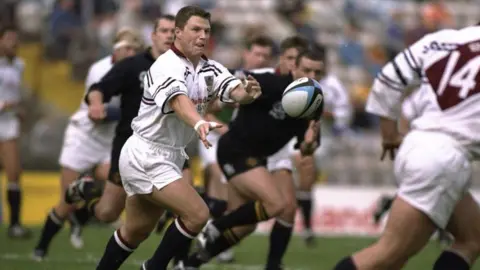 Getty Images
Getty ImagesDespite slipping out of the spotlight in recent times, St Helen's has been a cornerstone of Welsh sport for 150 years.
But the seafront venue will return to the limelight during the 2025-26 rugby season, when the Ospreys rugby side moves back in permanently.
The ground provided the scene for Wales' first home rugby international, Swansea becoming the first club to beat all three major southern hemisphere sides, and where Sir Garfield Sobers famously hit six sixes against Glamorgan.
But cricket has been brought to an end at the venue, and renovation work is taking place to turn it into a 8,000-capacity regional rugby stadium.
It had been the home of major rugby in Swansea since the 1880s, and in the 90s superstar names such as Colin Charvis, Scott Gibbs and Robert Jones dazzled crowds of thousands who packed the terrace.
But when rugby went professional and new sides were created in 2003, the old Swansea RFC joined with Neath RFC to create the new Ospreys brand.
While the side initially played at St Helen's, they moved to the new Swansea.com stadium to share with the city's football side when it opened in 2005.
Top level rugby may have been absent for 20 years, but in many ways, St Helen's is where the standards modern sides aspire to were set.
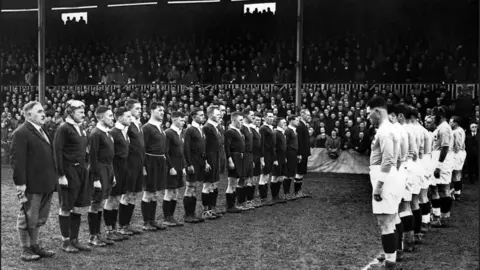 Getty Images
Getty ImagesIt is where Wales played their first home international match in 1882 against England, and where Swansea became the first club side to beat the All Blacks in 1935.
In fact, all three major touring sides have fallen at the ground, with South Africa being defeated there by Swansea in 1912 - more than 85 years before the national side would achieve this feat.
Australia fell in 1908, with Swansea becoming the first British club side to defeat all three southern hemisphere powerhouses, with the world champion Wallabies again losing there in 1992.
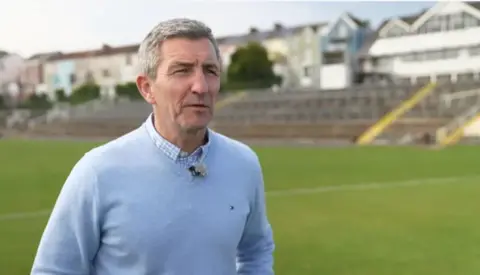
The changes to the stadium have created mixed feelings for former Swansea, Wales and Lions scrum-half Robert Jones.
"It's sad in one way because of course the pitch is going to change, 4G is going to come in and I know why, but St Helen's has one of the best pitches in Britain," he said.
"But it's nice that the Ospreys are coming down here and this will be their home in the future.
"That's important not just for Swansea rugby club but for the whole area."
People in the area were supportive of the move, with Carey, who lives nearby with her rugby fan partner, saying: "I just think any kind of regeneration for this area is going to be a positive thing, definitely."
Charlie said: "I've been there for a couple of rugby games at uni, it's quite lively so it should be fun."
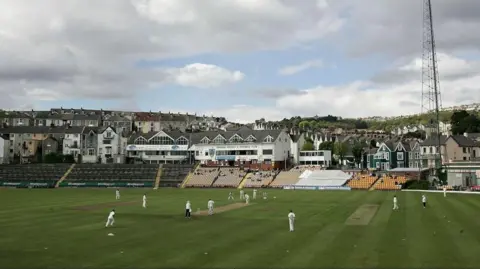 Getty Images
Getty ImagesThis is grass that has also seen many famous moments with a different shaped ball - with Glamorgan cricket club also having a 150-year association with it.
While the club has not played a match there since 2019, they claimed back-to-back victories over Australia at St Helen's in 1964 and 1968.
However, the ground may be best known for being the venue where Nottinghamshire's Sir Garfield Sobers became the first batter to hit six sixes in an over in a first-class match.
It was described by former Glamorgan and England spinner Robert Croft as "Wales' most iconic and historic cricket ground", as he said the fact cricket will no longer be played there is "disappointing, heart-breaking and sad".
But renovating one of Wales' most famous grounds is no small feat.
"We feel very privileged to be coming to this historic field and be able to give it new life and Swansea rugby club [who will also play there in the Welsh league] will be part of that," said Ospreys chief executive Lance Bradley.
"It needs to be an old-fashioned Welsh rugby ground but with all the modern qualities we can offer like the 4G pitch.
"Hopefully it will be the best of both worlds for everyone."
Returning to the good days of rugby in Swansea is the hope of Robert Jones who starred on the field during his career.
"I've been to games here when the bank was full and I just hope the fans will come and support the team," he said.
"Hopefully we can go back to where Swansea were years ago, but now of course with the Ospreys shirt on."
A new start for an old stadium, but the history of the past is a driving force for success for rugby in Swansea.
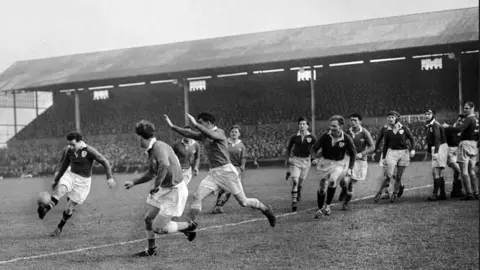 Getty Images
Getty ImagesA Swansea council spokesperson said: "We continue to work with the Ospreys, Swansea Cricket Club and others on this exciting plan for St Helen's to be redeveloped as a centre for all levels of rugby in the years to come.
"The council has conditionally agreed investment in St Helen's, with the Ospreys planning to play there from the 2025-26 season.
"Alternative ground arrangements are being made for Swansea Cricket Club to continue playing at Wales' highest level.
"Swansea is a sporting city - and these plans are part of a wider scheme to boost sport here for future generations."
